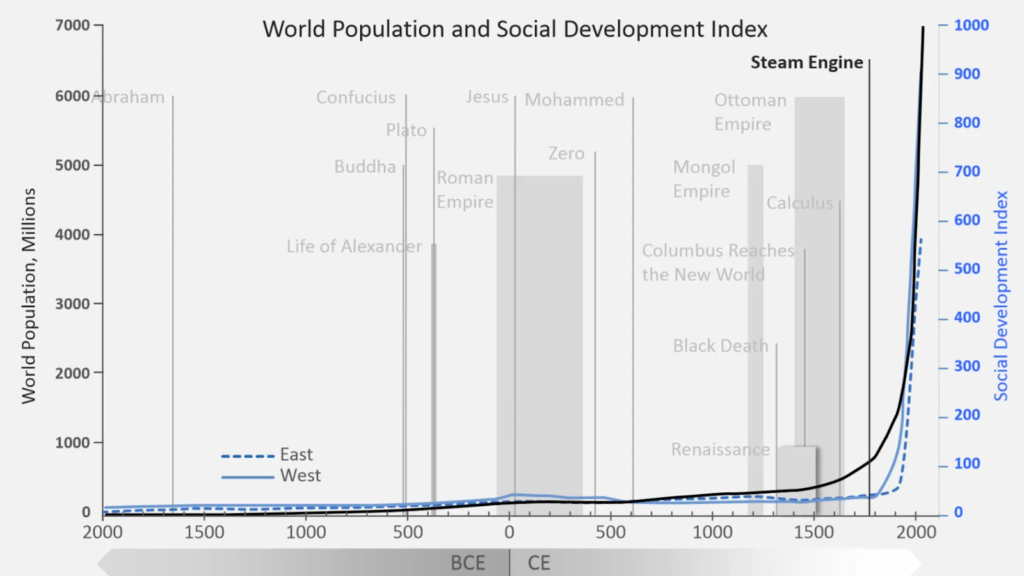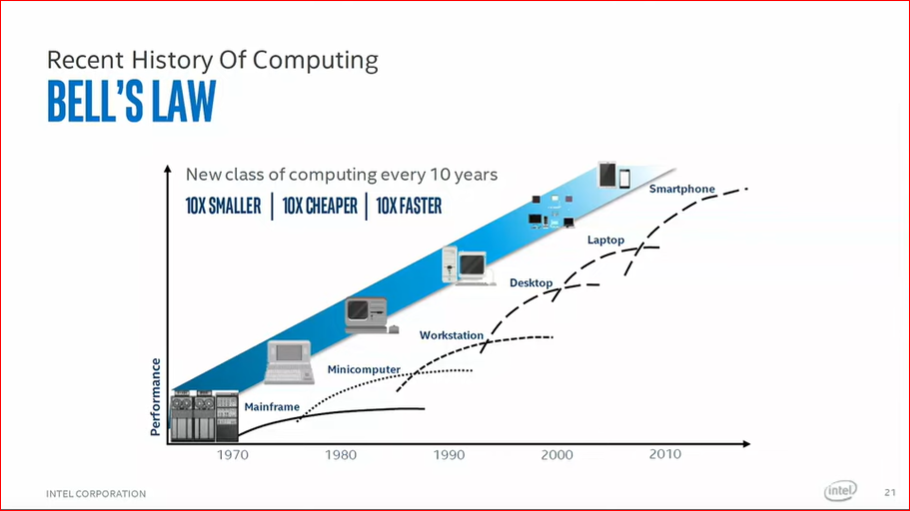Introduction
If you have had any recent discussions about the speed at which technologies are being developed and how they are changing our society, you most probably have heard the exasperated comments of people saying that it is happening too quickly. Perhaps you yourself think this or have expressed it at one time or another.
This feeling was first explained and termed as “Future Shock” by the futurist Alvin Toffler in his 1970 book of the same name. Toffler describes this psychological state as a personal perception of ‘too much change in too short a period of time.’ Toffler aptly borrowed from the popular idea of culture shock, where you feel a sense of disorientation when exposed to an unfamiliar culture with different ways of life, customs, rituals, etc. I certainly felt this sense of disorientation when I first traveled to Latin America and struggled with the most basic of actions like: communication, asking for directions, even what certain foods were (getting carrot juice when expecting mango for example..). This disoriented state is argued to be not only felt by many people today, but will continue to grow and be felt more strongly as new and emerging technologies keep coming more and more rapidly.
But why is this happening? If you think back in history, this certainly wasn’t the case. Our predecessors were nomadic and used primitive tools like the spear, fire, and bone needles for tens if not hundreds of thousands of years before the Neolithic Revolution brought about stable/ stationary agriculture practices only some 10-12,000 years ago. In his book “Why the west rules now“, anthropologist Ian Morris, made the argument that human progress* was incredibly slow and gradual, if not almost invisible…until suddenly it was not.

As you can clearly see here in a classic exponential hockey stick curve, not until the late 1700s did any real noticeable change in global human population numbers happen. One of my favourite books that brought this to my attention, “The 2nd Machine Age“, which I will refer to heavily in this article, further explains that the predominant reason for the start of this explosion had to do with one simple technological development, the invention and improvement of the Steam Engine which started the Industrial Revolution.
The First Industrial Revolution
Though the first industrial revolution brought about today’s modern age and facilitated enormous growth, the process, though fast for history up till that point, was quite slow compared to today’s digital growth. This is especially the case when considering the scope of that change. The industrial revolution only had a handful of essential technologies which sometimes took decades to deploy. If James Watt’s steam engine jump-started the revolution in 1781, it wasn’t until 1807 that the first successful steamboat was built, and then not till 1812 was a commercial steam locomotive used. It wasn’t then until 1869 that the famous transcontinental railroad was built.
“steam started it all. More than anything else, it allowed us to overcome the limitations of muscle power, human and animal, and generate massive amounts of useful energy at will.
The second industrial revolution marked by the use of electricity saw the electrical telegraph by Samuel Morse in 1844, Alexander Graham Bell’s telephone In 1876, and Thomas Edison’s first incandescent light bulb used commercially only in 1879. The 1893 world’s fair saw electricity used to light 100,000 lamps as the first large scale demonstration of electricity.
I’m not diminishing these feats at all, for their time they were incredibly impressive and laid the foundation for the next industrial revolutions and our current modern age. But the rate at which these landmark technologies came out were, in relation to today, quite slow. Think of the 90 years for the steam engine, and 80 years for electricity, compared to the current 25 years of the internet. These are drastic time differences for full implementation of a technology that had such profound effects on our society and individual ways of life.
But why is this? Why are today’s technologies coming out faster compared to before?
Moore’s Law
Before becoming co-founder of Intel (one of today’s largest providers of processors and circuit boards for technology companies across the world) Gordon Moore made a prediction in 1965 concerning the speed of growth for integrated circuits.
Essentially his prediction stated that computing power* would double every year! This was based on his observations of the cost of integrated circuits remaining the same for twice the amount of power being produced every year between 1962 and 1965. Since his first prediction there have been refinements and it is generally accepted that this occurs every 18-24 months rather than 12, and is now considered as Moore’s Law. Even though Moore himself believed this would only hold true for 10 years, and there have been countless naysayers proclaiming Moore’s law is either dead or dieing, it appears to continue to hold true till today. Jim Keller, a current leading engineer at Intel, speaks to this point really well in case anyone is interested in hearing a more detailed explanation as to why Moore’s Law will most probably continue well into the future. Whether it is every 12 or 18 months, doubling every year leads to exponential growth and changes.
To give a more visual example of what this means consider this simple doubling series:
- 1
- 2
- 4
- 8
- 16
- 32
- 64
- 128
- 256
- 512
- 1,024
- 2,048
- 4,096
- 8,192
- 16,384
- 32,768
- 65,536
- 131,072
- 262,144
- 524,288
- 1,048,576
After only the 20th iteration, there is a million fold increase. On the 30th, there is a billion fold.
According to an old legend,
Hopefully this gives a good idea of the potential of exponential growth.
An interesting outcome of this perpetual improvement as it relates to our physical world, is that roughly every 10 years, an entirely new class of computing emerges which is 10x smaller, cheaper, and faster. This is known as Bell’s Law.

Perhaps you’ve heard of the example of the smartphone in your pocket being more powerful than the computer used to guide the Apollo 11 spaceship? In fact your phone today has 1 million times more memory, and 100,000 times more processing power than the Apollo Guidance Computer used to help Neil Armstrong, Buzz Aldrin, and Michael Collins to the moon in 1969.
This is perhaps the best example there is to explain exponential technological growth, because it makes it so tangible. This idea becomes really interesting when you consider the fact that computation power is used in most modern day technologies and is really at the root of the digital explosion that we are all experiencing*. This lends itself perfectly to the automation technologies that I talk about on the podcast, as well as their near/long term future capabilities. I try to disseminate some of the newest innovations that I come across as I am personally blown away by many of the technologies that are coming out today. Not only at the rate but also by the power and the potential to make a strong impact on how we do or don’t do our jobs.
“Every 10 years, an entirely new class of computing emerges which is 10x smaller, cheaper, and faster. This is known as Bell’s Law.”
Essentially this understanding of exponential growth can lead one to imagine a technology with the level of impact like the steam engine, electricity, or the internet coming out not once every hundred years but every 50, 25, 12.5 or 6.25 years. This is the power that exponential technological growth, held up by Moore’s law, can potentially make a reality, and is also deeply connected to the state of Future Shock that we are feeling, and I argue, will continue to experience in greater degrees of magnitude as time goes on.
Conclusion
Given that Moore’s law will continue as predicted, it is possible that we will experience 100x in computation capacity in the next 10-15 years (as proposed by Jim Keller). With this in mind, to end this article it would be remiss to not touch on one of the more loftier ideas out there that is connected to exponential growth. I first came across this idea around 8 years ago after watching the 2009 documentary “Transcendent Man,” which explores the life and ideas of Inventor and Futurist Ray Kurzweil, who now now works at Google as the director of Engineering. If you haven’t seen it yet I highly recommend it. Definitely filled with ‘out there’ esoteric ideas but I think it does a fantastic job of opening one’s mind to new possibilities through technology, whether you believe the plausibility of the ideas or not (and there is ample criticism and debate around this subject).
So the idea in question is The Technological Singularity. Maybe you’ve heard about it as it has been becoming more popularised by general media. Essentially it is the idea that technological growth will become so rapid and uncontrollable that the impacts on human society will be impossible to predict. This is most usually connected to the emergence of a General Artificial Intelligence (GAI) that will be able to make core code programming changes to itself essentially upgrading itself to become a superintelligence that the combined effort of humanity couldn’t match up to. This idea, being spoken to by modern influencers like Ray Kurzweil and Elon Musk, or the late Stephen Hawking, is often connected to the point where humans would need to merge with this GAI in order to stay relevant, or even avoid eradication. As I mentioned, this is highly speculative and is surrounded by enormous criticism and debate, but most predictions do place this event in and around the middle of this century. And, if exponential technological growth continues as some expect it to, perhaps this future scenario could be possible..
Either way, we can expect that the next few decades are going to be incredibly interesting with the new disruptive technologies that come out, underpinned by the growing computing power and Moore’s Law.
Notes:
* Morris defined social development as “a group’s ability to master its physical and intellectual environment to get things done over time. He argued that the main measure to judge historical human progress is the total number of humans on the earth.
** The number of transistors in a dense integrated circuit
*** Of course exponential computation power isn’t the only sail driving this massive technological boat. Crossover of technologies or the ability to use a technology in a totally different field to solve a problem is happening more and more, which speeds up the cycle of innovation. Think of a robotic vision system that is able to detect objects and people being employed in security cameras or autonomous car systems. The fundamental technology only needs to be developed once, and then modified ‘slightly’ and integrated into its new application. This cuts back drastically on the need to innovate from scratch which saves money, resources, and time, fueling the exponential growth curve.









